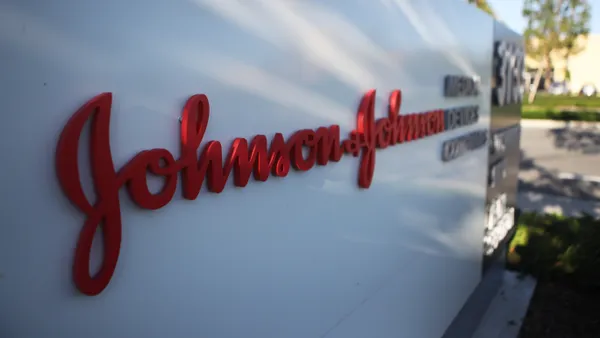Dive Brief:
- FDA has finalized guidance on the preparations companies should take to ensure they quickly and effectively execute voluntary product recalls. The agency wants all companies in the supply chain to be "recall ready" with the steps they should take, before it becomes necessary, including developing policies and procedures.
- The medical device industry, as represented by AdvaMed, identified the potential for conflicting interpretations of whether the guidance or an older regulation applies to the initiation of recalls as the biggest concern about the draft released for consultation in 2019. FDA has made some changes to sections highlighted by AdvaMed, clarifying that the definition of "Initiation of a Recall" is only for the "purpose of this guidance." The guidance was for the entire agency, not just the devices unit.
- While the FDA has the authority to require recalls of certain products in particular circumstances, Associate Commissioner of Regulatory Affairs Judith McMeekin in a statement said voluntary recalls "continue to be the fastest, most effective way for a company to correct or remove violative and potentially harmful products from the market." The agency recommended companies use electronic communications to quickly identify and provide certain product information when alerting consignees and the public about a voluntary recall.
Dive Insight:
The guidance comes after the FDA has held several public meetings regarding the recall process for medical devices, which followed several high-profile product safety issues like Allergan's recall of breast implant products that caused cancer in hundreds of women and deaths and injuries associated with the use of surgical staplers.
Experts have criticized the recall process as being outdated and inefficient, pointing to issues like the primary form of recall communication being through letters, rather than electronic-based.
Other critiques of the recall process include for there to be better product identification, such as the utilization of unique device identifiers in recalls, and for better patient outreach as the communication process can be slow or confusing, which can leave patients with the burden to track down important safety information.
AdvaMed zeroed in on a footnote as the "issue most relevant to the medical device industry" in the FDA's draft guidance. The footnote stated that "initiating a recall in accordance with the provisions in 21 CFR Part 7 does not negate any regulatory requirements that might be applicable (e.g., the requirement to report the initiation of a correction or removal in accordance with 21 CFR 806.10)."
The concerns centered on differences between the draft and Part 806, legislation that covers reports of medical device corrections and removals. Part 806 lacks a definition for "Initiation of a Recall" but in its 1997 preamble to the legislation, FDA said it "believes that the initiation or initiating of a correction or removal is that moment in time when a firm makes the first contact within or outside the firm that begins the correction or removal action." AdvaMed emphasized the phrase "within or outside."
In the draft guidance, FDA said "initiation of a recall means a recalling firm's first communication about a voluntary recall, to its direct accounts or to the public." AdvaMed was concerned that the draft guidance and Part 806 "provide conflicting interpretations as to which applies in the context of medical devices."
While agreeing that "a guidance cannot negate a regulation," AdvaMed called for FDA to "determine that the definition used in the Draft Guidance applies for purposes of Part 806." The request reflected a belief that the definition in the draft is commonly understood and that harmonization will "avoid industry, consumer and FDA confusion" and "reduce regulatory burdens, particularly for firms manufacturing both devices and drugs and for firms manufacturing combination products."
FDA has made small changes to the definition and the footnote on Part 806. The agency has inserted the phrase "for the purpose of this guidance" into its definition of "Initiation of a Recall." FDA has also tweaked the footnote, clarifying that initiating a recall "does not negate any regulatory requirements that might be applicable with respect to the violative product."
Several other requests for changes by AdvaMed have gone unheeded by FDA. AdvaMed wanted the agency to commit to a specific timeframe for responding to questions from industry. The trade group proposed a five-day turnaround but FDA opted against adding a timeframe to the final guidance.
The agency's guidance recommends companies "have adequate product coding and maintain distribution records to facilitate faster, more accurate recall actions" and "develop recall procedures to quickly inform their entire distribution chain, so consignees can rapidly identify affected lots and recall downstream products when necessary."
Software issues remained the top cause of medical device recalls in 2021, according to Sedgwick's latest product recall index. Nonetheless, mislabeling was the top cause of recalls in the fourth quarter, a change from software, which has been the leading cause for 21 of the last 23 quarters.
While medical device recall events in 2021 were 20.2% below their 10-year annual average (837 vs. 1,049), impacted units were 134.8% above (602.5 million vs. 256.6 million), according to Sedgwick. However, the difference in units recalled is largely from one recall of syringe needles.
In August, Cardinal Health initiated a recall of its Monoject saline flush prefilled syringes, which are used to flush intravenous tubing and other devices that are used to access blood vessels for fluid and medication delivery. The recall affected over 267 million units.










